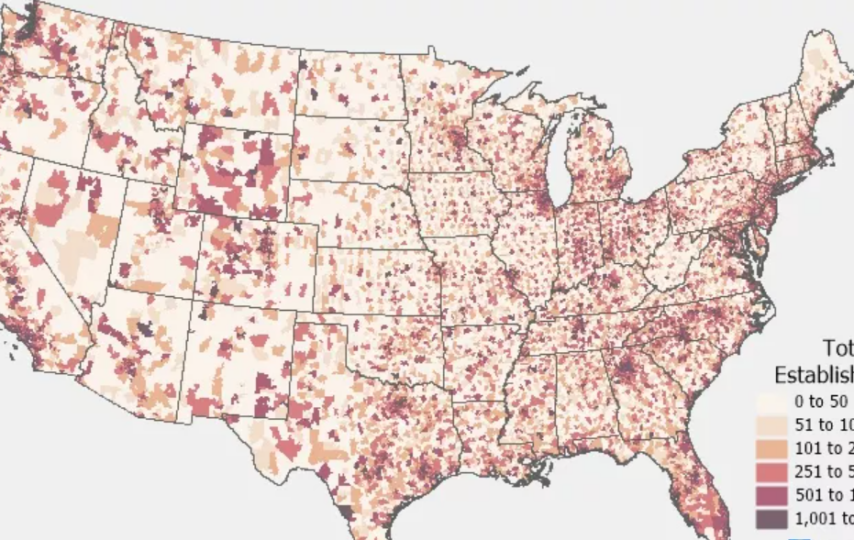In the 1960s, the United States Postal Service introduced the ZIP code as a more efficient method for tracking delivery routes nationwide. Since its inception as the Zone Improvement Plan (ZIP), several enhancements have been made, including the notable addition of the four-digit extension in 1983.
Today, businesses are capitalizing on the advantages of ZIP codes like never before, thanks to the ability to map locations in bulk on a Google map.
Importing Your Location-Based Data
The most frequently used location-based dataset brought into business mapping software is a list of customer addresses. However, this could encompass any dataset containing address locations. When gathering business data, leveraging your existing customer database proves highly valuable. In this resource, seek out customer addresses and ZIP codes within your records, and, depending on your data management system, you may be able to directly extract this information. Furthermore, engaging in market research can broaden your dataset. Consider conducting surveys or administering questionnaires to capture addresses and ZIP codes from businesses. These surveys include inquiries about their location details. Boost participation by offering incentives, such as discounts or free resources, encouraging businesses to share their information for your research needs.
Full address locations come closest to reality, approximating the actual positions of houses and businesses. For even greater accuracy, latitude and longitude coordinates are preferable. Keep in mind that digital maps employ address ranges in addition to precise coordinate locations. While these ranges are generally accurate, they can occasionally deviate significantly from reality, potentially placing points on the wrong side of the street. This is an inherent characteristic of maps—they are not flawless but a continually evolving work in progress.
Geocoding
Geocoding converts addresses into geographic coordinates (latitude and longitude) that users can plot on a map. You can use geocoding services or software to assign coordinates to each business location. Geocoding tools are available in popular GIS software and online services.
Adding ZIP Code Boundary Data
Obtain ZIP code boundary data for your area of interest. This data defines the geographic boundaries of each ZIP code. Many geographic data providers offer ZIP code boundary files to input into your mapping software.
Selecting Mapping Software
Choose mapping software or tools that support geographic data visualization. When choosing mapping software, prioritize user-friendliness with an intuitive interface for effortless data import and manipulation. Additionally, ensure the software accommodates your data formats, enabling seamless import and supporting customization, such as creating custom territories, markers, labels, and map style adjustments.
Afterwards, import your business location and ZIP code boundary data into the chosen software.
Data Mapping
Use the mapping software to plot the businesses on the map. Match the ZIP code of each business to the corresponding ZIP code boundary on the map. This will assign each business to its respective ZIP code area.
Visualizing Your Data
Customize your map to visualize the data effectively. You can use color-coding, symbols, or labels to represent businesses within each ZIP code. Taking this step isn’t just for aesthetics; rather, it makes it easier to differentiate and analyze the distribution of businesses.
Completing an Analysis
Once you create your map, you can analyze the data and look for insights. You can identify areas with a high concentration of businesses, gaps in coverage, or expansion opportunities. This analysis can inform marketing strategies, site selection, and resource allocation.
Exporting and Sharing Your Map
Export the mapped data for reporting and sharing. You can generate image files, interactive maps, or shareable links depending on your needs.
Getting The Most Out Of Your Zip Code Map
After following these steps, you will have a working zip code map to help you harness location data, gain insights and make data-driven decisions that will ensure you set up your business for success in the long run. In the past, successful companies have taken their maps one step further and layered in consumer information like age, gender, or ethnicity to learn more about the people your business is trying to sell to.








